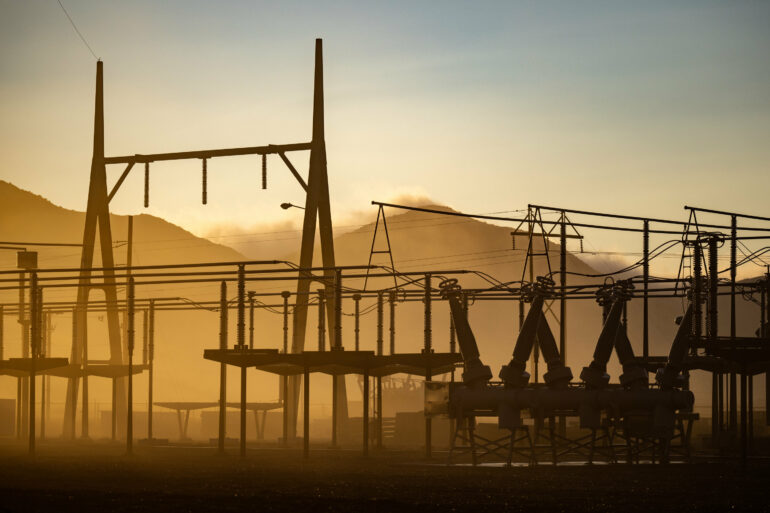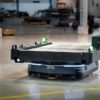Climate change can alter extreme weather events, and these events have the potential to strain, disrupt or damage the nation’s grid.
Sandia National Laboratories computer scientists have been working on an innovative computer model to help grid operators quickly restore power to the grid after a complete disruption, a process called “black start.”
Their model combines a restoration-optimization model with a computer model of how grid operators would make decisions when they don’t have complete knowledge of every generator and distribution line. The model also includes a physics-based understanding of how the individual power generators, distribution substations and power lines would react during the process of restoring power to the grid.
“We’ve spent a lot of time thinking about how we go beyond simply looking at this as a multi-layered optimization problem,” said project lead Kevin Stamber. “When we start to discuss disruptions to the electric grid, being able to act on the available information and provide a response is critical. The operator still has to work that restoration solution against the grid and see whether or not they are getting the types of reactions from the system that they expect to see.”
The overarching model also can simulate black starts triggered by human-caused disruptions such as a successful cyberattack.
Optimizing power restoration
The optimization portion of the model assesses the grid and its components to determine how to restore power to the grid as quickly as possible, said Bryan Arguello, a Sandia computer scientist who worked on this section of the model.
For example, the optimal approach might be to start with generator 1 to power up substation A. Once substation A is energized, generators 2–4 can safely power up, which in turn will provide power to substations B, C and D, as well as some critical infrastructures such as a water purification plant or an area hospital. Once substation D is energized, power plants 5–8 can power up, and so on until power is restored to the entire grid.
Once the power-restoration schedule is developed, the algorithm compares it against physical limitations to determine if the schedule is feasible, Arguello said. “The challenge here is bringing in just the right amount of information so that the model can make wise decisions, without bogging it down in too much detail.”
The restoration optimization portion is based off a similar model created by researchers at Lawrence Livermore National Laboratory and the University of California, Berkeley, which strategically adds more details to the model as the algorithm progresses, Arguello said.
This model can also accurately approximate alternating current power flow, which is computationally more complex than direct current and is a more accurate representation of the grid during severe disruptions such as black start conditions, said Richard Garrett, a Sandia computer scientist who led this portion of the project.
Recently the team began validating the restoration schedules generated by their code against ones generated by industry-standard optimization software, Stamber said. This is to ensure that Sandia’s model recommends plans that can be realistically executed.
Modeling operator decision-making
The fulcrum of the overall model lies with the operator decision-making code, Stamber said. This algorithm takes the results from the optimization code and enacts it on a third code, which is a physics-based simulation of the grid and how it dynamically responds to the operator’s actions. Walt Beyeler led the development of the third portion.
The operator decision-making model is based off a research-based cognitive model created by scientists at Carnegie Mellon University, said Casey Doyle, a systems analyst who is leading this portion of the model. This well-established model was adapted for power restoration by coding in expert knowledge about the sub-tasks necessary to complete main tasks such as the steps required to start a generator and then connect it to the nearest substation. They also added in fail safes so the cognitive model wouldn’t freeze if the grid behaved unexpectedly, Doyle said.
“We’re trying to create a cognitively sound agent that can read in a restoration plan that’s created by the optimization model and then try to implement it on a simulation of the power system,” Doyle said. “It goes through step-by-step and reads what the schedule says has to happen and it tries to implement it. It does all the decision processes in between, including making sure that the frequencies match before lines are connected.”
The operator model interacts with the model of the grid through a simulated console and is limited to the knowledge presented by the console, rather than presuming the grid operator knows everything, which is typically assumed in power-restoration models.
In fact, the operator model can assess whether the network model’s behavior matches up with what it is expecting based on the results of the optimization algorithm, Stamber said. The simulated console can also allow the team to swap in actual feeds of information from the grid for the network dynamic model, if a partner provides the information, he added.
“Black starts are really rare, extreme events, but when one happens it’s really bad,” Doyle said. “Even in partial blackouts, like what happened in Texas in 2021, people died because they didn’t have power, they didn’t have heat. If you have a complete blackout, it’s likely that it would be caused by a hurricane or earthquake and operators are trying to restore power to whole communities. Delays in power restoration could cause even more damage or loss of life. It’s hugely impactful to understand how to bring the power back as quickly as possible.”
Provided by
Sandia National Laboratories
Citation:
Researchers create innovative model to optimize restoring power to the grid (2023, January 31)



